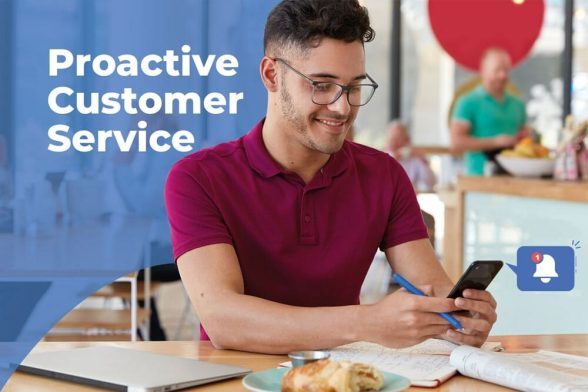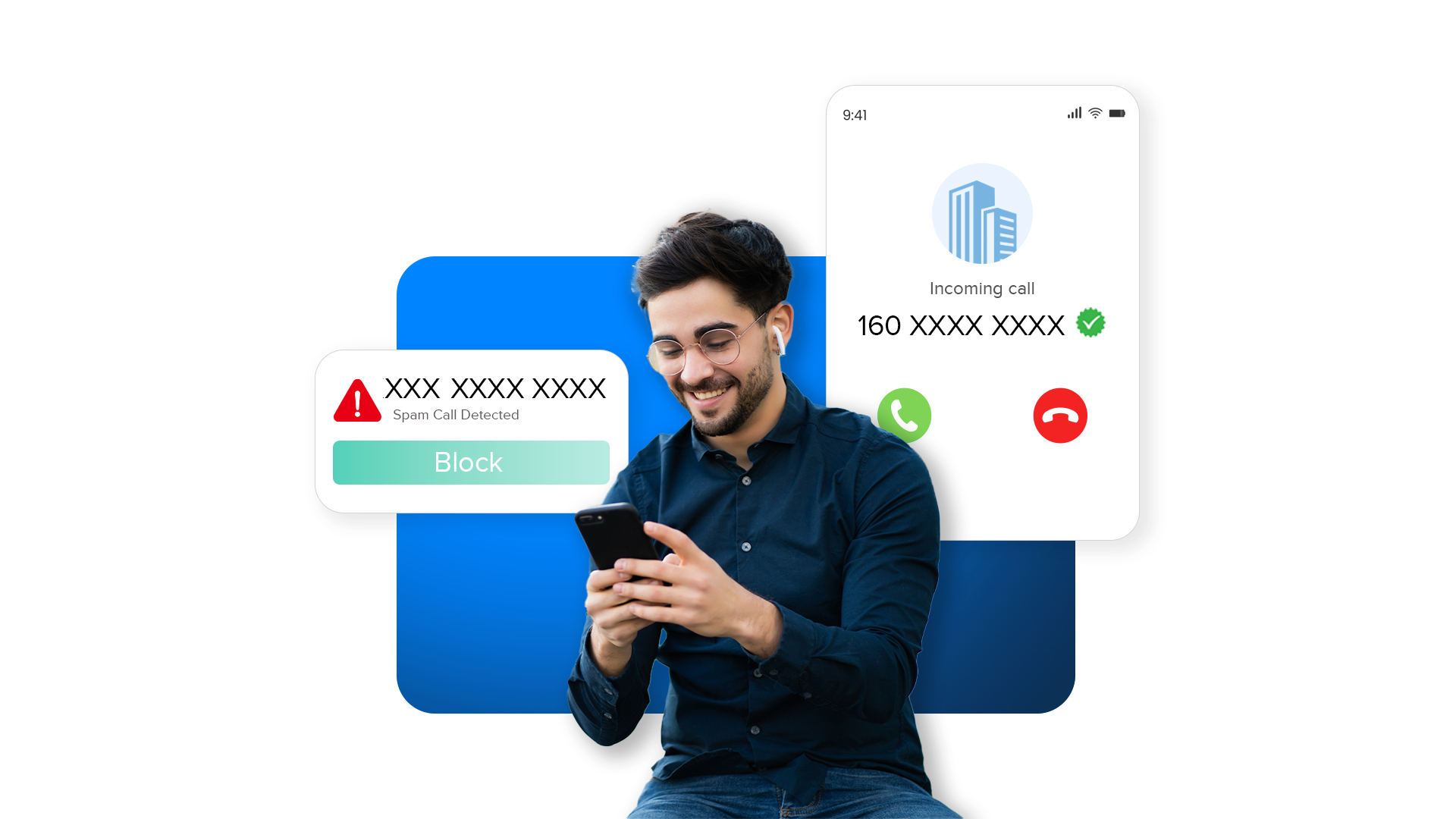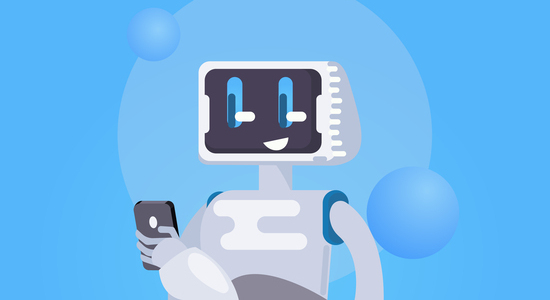
How does your company provide service? Do you wait for customers to follow up on unresolved issues or will service representatives reach out to them before that happens?
Do you keep customers informed on delays, changes, or updates? Or do they have to search out information on their own?
Do you measure success in terms of how quickly agents can resolve a problem? Or do you also consider how the problem affected the customer and what it took for them to get help?
Most customer service scores focus on how effectively customer queries are resolved and how well customers are treated when engaging with agents. But if you want to continue delivering excellent customer service, it’s time to start thinking beyond the frame of service interactions.
It’s time to proactively take care of the customer, whether or not they’ve asked for your help.
In this article, we will explore:
- 1. What is Proactive Customer Service?
- 2. Why is Proactive Customer Service Important?
- 3. What are the Benefits of Proactive Customer Service?
- 4. Seven Examples of Proactive Customer Service
- 5. Implementing a Proactive Customer Service Strategy
- 6. Tools and Technology for Implementing Proactive Customer Service
- 7. The Role of Contact Center Software in Enabling Proactive Customer Service
- 8. Find A Proactive Customer Service Solution
What is Proactive Customer Service?
Proactive customer service is when your company takes an active leading role in customer service. Your agents initiate engagement, outreach, and communication with the customer – dynamically shaping the relationship and guiding the customer to a positive outcome.
This is an anticipatory approach to customer service. It requires first keenly understanding the customer’s problems, needs, and desires, then meeting these as smoothly and conveniently to the customer as possible.
Proactive Customer Service Vs Reactive Customer Service

Customer service has traditionally taken the reactive approach. That’s with the exception of a few brands – like Disney and American Express – that have always gone out of the way to provide high-end white-glove service.
So, what’s wrong with simply letting customers ask for help then responding to their needs? Senior Gartner Analyst, Philip Jenkins, puts it this way.

“Reactive service experiences place the burden on customers to find the best channel for resolution, whether it’s to check on the status of a request, conduct a transaction, or troubleshoot a repair issue,” Jenkins says. “Customers often switch channels or use multiple channels concurrently, further increasing both effort and service costs.”
Proactive customer service is less stressful and more rewarding for the customer, lowering or eliminating the effort it takes to get a resolution. And that’s exactly what’s needed now.
What’s the difference between proactive and reactive customer service?
Proactive customer service:
- happens whenever your company initiates a service interaction, making the first move to resolve an issue or create a positive experience
- foresees the customer’s needs
- watches for potential problems and solves them without involving the customer
- uses real-time alerts and notifications
Reactive customer service:
- happens when you respond to a customer’s inquiry or request
- waits for the customer to communicate their needs
- waits for the customer to inform them of problems and issues
- requires customers to call in, send an email, or open a service ticket
Why is Proactive Customer Service Important?
Proactivity is the future of customer service. Over the past few years, customer service has evolved at breakneck speed with the rise of hyperconnectivity and advances in emerging technologies, like AI and advanced analytics.
Customer service today revolves around making service as convenient, effortless, and personalized as possible. And prescient proactive customer service is simply the next step. It’s necessary for any business that wants to continue meeting and exceeding the customer’s expectations.
McKinsey describes the new customer experience standard as personalized, white-glove service for everyone. This can be broken down into service that’s simple, predictive, proactive, and responsive.
Your customers are already used to this. Proactive customer service is in cars, phones, and laptops. Banks and financial institutions have moved to this strategy in order to preserve their clientele. Ecommerce brands are making customers happy by integrating proactive customer service into fulfillment with shipping and delivery apps. UberEATS engages in it when sending out order updates and regular personalized promotions. Amazon’s Alexa provides updates on product deliveries and asks users if they’d like to repurchase items.
Customers expect white-glove personalized attention everywhere now. Their standards are high, patience is low, and brand loyalty is even lower.
Shifting into a proactive customer service approach is the only way to retain customers and keep them happy.
Think you can get away with providing the same old reactive service? That’s a risky idea given that companies are facing stiff competition and customers are quite willing to try different brands. If you fail to adapt, you risk losing customers, having a damaged reputation, and being seen as outdated.
And even if your brand monopolizes the marketplace, there are still vast advantages to be gained from switching to proactive customer service.
These new technological capabilities have established higher baseline expectations and standards for customer service.
- Omnichannel service is now fundamental as it’s considered unacceptable and bad business to not provide service on your customer’s preferred device or across several devices.
- Hyper-personalization is being broadly adopted, thanks to new expectations created by customized online experiences.
- On-demand service developed along with these as consumers expect instant attention and fulfillment in every interaction.
What are the Benefits of Proactive Customer Service?
The technological capabilities available to you are exponentially greater than ever before and substantially more cost-effective. This revolutionizes the kind of service you can provide, enabling you to deliver proactive service that’s more embedded into their lives and more personally attuned.
According to Gartner’s Senior Director Analyst, John Quaglietta, “shifting from reactive to proactive conversations is a game-changer, delivering nearly effortless experiences, reducing cost and increasing customer lifetime value.”
The benefits go all around. Gartner’s study of around 6,000 customers found that implementing proactive customer service resulted in higher net promoter, customer satisfaction, customer effort, and value enhancement scoring.
And McKinsey estimates that service-heavy companies who shift to proactive white-glove service can save 25 to 50% on customer service costs while improving the customer’s experience.
Anything related to operational expenses, internal capabilities, customer reach, and customer experience will be improved. You simultaneously increase the customer’s ease while lowering your own efforts.
When delivered through a smart, omnichannel solution, you can expect proactive customer service to deliver:
- Higher customer satisfaction
- Greater operational efficiency
- Better customer conversion
- Stronger retention rates
- Increased revenue
- Deeper customer insights
- Lower agent costs
- Minimizes the customer’s exertion
- Faster problem resolution time
Seven Examples of Proactive Customer Service

You can engage in proactive customer service at every marketing and sales step. It can take many forms, some are mundane, while others are designed to excite and wow the customer.
Have you heard the Morton’s The Steakhouse customer service story? A traveler tweeted his desire to be greeted by a Morton’s steak when his flight landed, and the restaurant surprised him with a perfectly cooked porterhouse steak. This was completely unnecessary but ended up creating a near-legendary service reputation.
Augmented reality and video chatting apps are other forms of proactive customer service that can assist customers with shopping from home.
Other examples of proactive service may feel more mundane and routine, but still add tremendous value to everyday life.
Ever landed on a website and found yourself greeted with a welcome chatbot? That’s proactive service. Or has your banking app ever given you a notification about upcoming downtime due to IT work? That’s also proactive customer service.
Here are seven areas you can engage in.
1. Website Chats
Website chats – whether live or robotic – can be used to greet customers, walk them through sticking points, provide information, collect insight, and more.
For larger companies, a website chat can relieve the burden of your customer service department. For smaller ones, this can give you an outsized appearance.
These are pretty easy to add. HubSpot is a popular CRM tool that includes a chatbot option. And HubSpot can be integrated into your contact center solution.
Chatbots can be further developed into full-fledged virtual assistants. This is best done when the product or service being offered is quite complex or requires extensive consultation.
2. Knowledge Base
Most companies already have an FAQ page up. This is simply to do but still qualifies as proactive service. Most prospects or customers will have questions on who your company is, what you stand for, and how you do business, along with product or service questions.
Other companies can build out a complete knowledge base. Proactive service can be blended with self-service tools.
Sure, your customer might only find it after a search, but it’s proactive in the sense that you’ve provided the resources you know they will need.
3. Push Notifications
Some businesses have to stay in near-constant contact with customers or retain the ability to instantly do so.
If you want to deliver instant notifications, this has to be done with a specialized communications solution capable of delivering text messages and voicemail or integrating with digital channels like messaging and chat apps.
4. Social Media Engagement
Social media is built for proactive customer service. First, because it’s incredibly easy to do. Simply engaging with customers in a friendly manner is great customer service and you can reach everyone from prospects to repeat customers.
Secondly, because it’s incredibly dangerous not to be proactively engaged with your online customer base.
Many brand reputations have been destroyed via social media when complaints and missteps went viral.
Don’t want this to happen to you? Actively listen and engage with customers on the social media channels most relevant to the company.
5. Surveys and Questionnaires
Gathering customer and market-related insight used to be the domain of dedicated market researchers and professional consulting firms. This made it expensive and out of reach for smaller companies.
But you can gather intelligence, reviews, and customer sentiment by adding surveys and questionnaires across your marketing and sales cycles.
Then follow up on the customer insight with personalized content or sales calls.
You can also use interactive content to gather phone numbers, then send out SMS-based promotions.
6. Customer Apologies
Has your brand ever fallen short on product or service quality, not met standards, or failed to deliver what was promised?
A customer apology may be in order. Not only because it’s the right thing to do, but also because freely and voluntarily admitting to company error can end up preserving your reputation.
You might not have gotten things right, but you will have demonstrated integrity, accountability, and trustworthiness.
Apologies can be sent out through email, posted on the company’s website, posted on social media (if it wasn’t that serious), or made via personal calls.
7. Loyalty Programs
If you want to really take care of customers, go out of the way to make them feel special and appreciated with a loyalty club.
Programs that reward and incentivize customers are in full swing. Customers who feel they benefit from your communications or services are far more likely to engage with you and continue to purchase.
This creates a self-perpetuating value-generating cycle. Your company gets higher sales, can incentivize positive reviews, and can preview new products for review.
Push Notifications
This might include providing notifications for:
- service availability
- discounts
- promotions
- market-related news
Implementing a Proactive Customer Service Strategy
Proactive customer service puts the onus on you and your company to actively watch for the customer’s best interest and work towards delivering positive outcomes wherever your product or service is involved.
This isn’t a single tactic to implement here or there. It’s an entire reorientation of your customer service department.
It can also be helpful to consider a few questions related to key stages in the buying cycle or customer service tasks. Where are you already delivering automated messages? What kind of information do you repeatedly deliver? When do you need to periodically gather customer information? Where do you want to stoke interest or spark a conversation? What and where do you need to monitor to scout for potential problems or experience-creating opportunities?
Proactive customer service doesn’t happen in a vacuum. It works by staying in tune with your customers and being deeply informed on what they’re going through or may come up against, then smoothly delivering a positive experience. And this takes a unified array of tools.
That said, you can begin by prioritizing your strategy around a few key proactive customer service areas that deliver the most ROI. These include:
- Issue resolution
- New feature education
- New product promotions
- Purchase renewals
- Providing information and updates around new contact methods
Tools and Technology for Implementing Proactive Customer Service
Proactive service isn’t new. It’s been used by high-end and luxury brands with great success. However, new technologies have democratized this approach, making it affordable and in reach for companies of all sizes.
Here are three core technologies and tools to look for.
1. AI and NLP
Forrester recently published a report on seven foundational tools for enabling proactive customer service. And AIOps was at the top of the list.
Artificial intelligence, machine learning, and natural language processing work hand in hand to deliver real-time intent and sentiment recognition, then follow up with human-like responses. This can be referred to as conversational AI.
It means that a computer can recognize and process the meaning of spoken languages, then respond in a natural manner.
AI and NLP are no longer reserved for large research institutions. Your organization can take full advantage by onboarding with a contact center solution built with conversational AI.
2. Omnichannel Routing Through API-based Integrations
You should be able to unify your contact solution with your customer relationship management tool, e-commerce software, sales app, secondary messaging platforms, and any other tool used to facilitate customer engagement.
Otherwise, your agents will be left with a disjointed or limited view of the customer and will be unable to reach them across the buying journey.
This takes a platform with a solid, open API architecture. It should come ready to integrate with a core set of apps and facilitate custom integrations.
Strong and secure API connections create a truly omnichannel solution that can fluidly go from website chats to phone calls to WhatsApp or any other channel.
3. Auto Dialers
Auto dialers are a call center technology used to automatically dial numbers. A basic auto dialer immediately makes your call center more efficient.
However, more powerful auto dialers that facilitate complex logic with self-analyzing capabilities are a value-generating asset.
A leading-edge auto dialer solution will clean invalid numbers, determine the best time of day to call, and interact with customers.
Once your CRM is integrated, it will pull customer information so that agents get a better understanding of the call’s context.
The Role of Contact Center Software in Enabling Proactive Customer Service
You’ve probably picked up on the fact that proactive customer service is communication-driven. It’s delivered via online chats, text messages, phone conversations, emails, and sometimes through social media.
And this communication isn’t a one-way street. It’s a dynamic, boundaryless way of providing service and interacting with customers.
This requires a customer communications solution that does more than send out calls or emails. It takes a robust platform that can integrate information from a range of devices while remaining dynamic and agile. But you also need one with extensive self-service capabilities.
Your customers should be able to have natural-feeling conversations with an online or voice-based communications system, to retrieve information or make updates at their convenience.
At the very least, your contact center solution should be able to send out personalized automated calls, integrate proactive calling throughout the customer journey, and deliver backup information through a variety of channels.
Power Auto Dialers
Auto dialers are your biggest ally in proactive call center communications. These enable sending automated calls to your customer database.
You can use auto dialers to send calls to your entire database, a particular segment, or individual customers.
Auto dialers are one of the best and most reliable ways to keep customers informed. Emails are great but can’t be the only method you rely on. It’s way too easy for emails to get lost in overcrowded inboxes, confused with spam, or simply go unread.
Auto dialers can be used to send automated messages, deliver information through a smart voice bot, or connect customers with an agent for a personal conversation.
You can program the dialer to call customers during a specific timeframe and allow the AI to find the optimal time. If customers don’t pick up, the dialer can leave a voicemail delivering information or asking customers to contact the company.
CRM
Auto dialers can do more than deliver transactional, account, or service-related information. By integrating it with your CRM, you can deliver automated calls at critical touchpoints throughout the customer’s journey.
Have a long or complex sales cycle? You might want to have skilled agents check-in with customers or book appointments to discuss concerns.
How about post-sales onboarding? This can prevent returns and improve satisfaction by ensuring that customers immediately use the product, experience its value, and reap the intended ROI.
You should always check in with customers at some point after the sale. This will help maintain the relationship, gather feedback, and detect issues before they may their way onto review sites or social media.
You know your customers best and understand when you need to contact them. Your contact center solution should enable you to program campaigns and calls based on your marketing insights, sales cycle, and support program.
Having the customer’s number is valuable. And a contact center solution that fully integrates with your CRM will put it to full use.
Smart Omnichannel
A multichannel contact center will add text messages, chat notifications, and emails to this mix. For instance, you can send out automated WhatsApp or text notifications.
Shorter messages are best for verifying identities, delivering information, confirming information, or asking the customer to call in.
You can also facilitate robotic website chat and voice chat sessions by using a solution that incorporates AI and natural language processing capabilities.
Thanks to improvements in NLP-based technologies, AI can handle fairly complex conversations while still feeling natural and conversational.
These technologies are the main reasons why proactive customer service is feasible. Switching to a proactive approach won’t leave your agents with a larger service burden, as long as you have the right solution on hand.
The customer may decide to:
- Jump from one channel to another
- Pick up a conversation that started sometime earlier
- Call in after getting a notification or email
- Begin an online chat conversation to confirm something said over the phone
Your agents need a way to:
- Understand who they are communicating with
- See prior service interactions
- Follow up with a customer who ended a session
- Deliver information through multiple channels
Power Auto Dialers
That might look like:
- telling customers about an upcoming service outage
- promoting a high-end product to a select customer group
- letting a particular customer know about a repair update
- informing a waitlist that a product is now in stock
Find A Proactive Customer Service Solution
Ozonetel is a user-friendly contact center solution that’s relied on and trusted by over 2,500 global businesses.
It’s smart, robust, and highly customizable to keep you in touch with all your customers no matter what channel they’re on.
We’ve been upstart leaders in AI-based contact center innovation since day one and continue to provide a technologically advanced contact center solution at affordable pricing.
Experience it for yourself today with an all-inclusive 21-day free trial.







